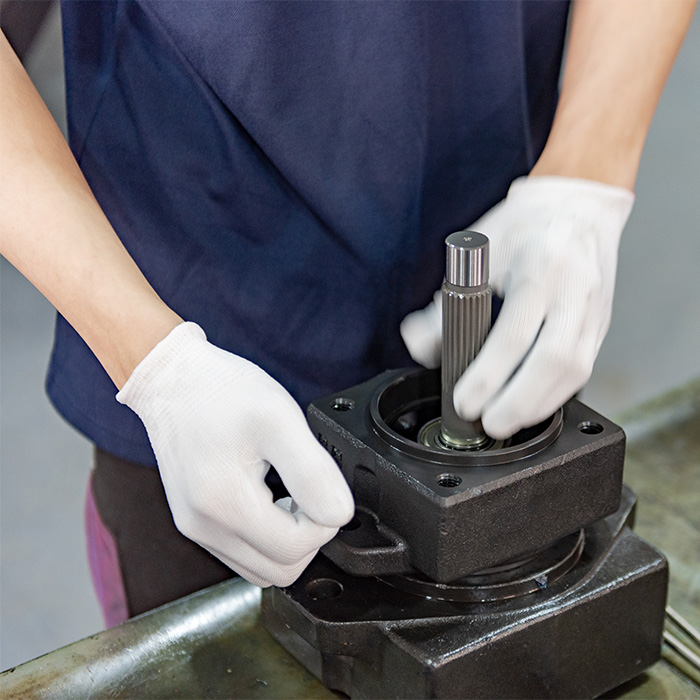How to repair the noise of hydraulic vane pump?
1. The air hole of the fuel tank is blocked. Just clean the vent.
2. The oil level of the fuel tank is too low or the oil suction position is too high. The solution is to fill the fuel tank to the oil level line or lower the installation height of the hydraulic oil pump.
3. The filter and oil suction pipe are partially blocked or the area of the pipe is too small. The treatment method is to clean the filter element and the oil suction pipe to a normal state, and replace the appropriate filter or oil suction pipe.
4. The sealing of the hydraulic vane pump and the oil suction pipe is not tight enough. The solution is to check the tightness of the connection and joint surface and make it completely sealed.
5. The viscosity of the oil is too high. The treatment method is to check the oil quality and select hydraulic oil that meets the standard viscosity.
6. The channel of the suction chamber of the hydraulic vane pump is not clean enough. The treatment method is to remove the pump and clean it.
7. The bearings or internal parts of the hydraulic vane pump are severely worn. The treatment method is to disassemble the pump for repair or replace it with a new one.
8. The structural design of the hydraulic vane oil pump itself is not good enough, and the oil is seriously trapped. The solution is to improve the design and improve the unloading capacity.

9. Inhale air bubbles. This is very common when the hydraulic vane pump is newly installed. The treatment method is to start the test several times. After no abnormalities, carry out no-load operation to remove the air; separate the oil suction pipe from the oil return pipe by a certain distance, and insert the oil return pipe into the oil surface. Under a certain depth, the oil return pipe cannot be placed above the oil surface.
10.The internal parts of the hydraulic vane oil pump are damaged or stuck, the oil seal is damaged, and the sealing ring of the oil inlet is damaged; the treatment method is to repair or replace.
11.The electro-hydraulic valve electromagnet fails, and the control pressure is unstable; the solution is: check and repair, and select a suitable control oil circuit.
12.The damping hole of the reverse flow valve is blocked, the valve seat is damaged, the spring is fatigued or damaged, the valve core is not moving flexibly, the remote pressure regulating pipeline is too long, and the whistling sound is generated; the treatment methods are: cleaning, repairing, replacing the spring for cleaning, Deburring, shorten the length of the pipeline as much as possible under the condition of meeting the requirements and standards of use.
13.The hydraulic pressure in the hydraulic pipeline is pulsating, the length of the pipe and the installation position of the components are unreasonably matched, the oil suction filter is blocked, the oil suction pipeline leaks, the oil temperature is too high or too low, the pipe clamp is loose, etc.; the treatment method is: Add an accumulator or muffler to the outlet of the vane oil pump, reasonably determine the length of the pipe and the installation position of the components, clean or replace the components, strengthen the sealing, and check the working conditions of the components, etc.
14.The coupling between the hydraulic vane pump and the prime mover of the mechanical part is not at the same level or is not fastened enough, the installation of the hydraulic vane pump is not good, the coaxiality between the pump and the motor is poor, the base of the prime mover, the hydraulic pump bracket, and the fixing screws are loose. Mechanical transmission parts (belts, gears, racks, bearings, rods) and motors are faulty; there will be some abnormal noise at this time, and we must reinstall the pump to meet the technical requirements. The treatment method is: adjust the position, reinstall, fasten the components, overhaul or replace.

